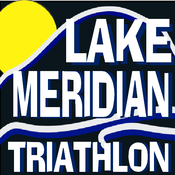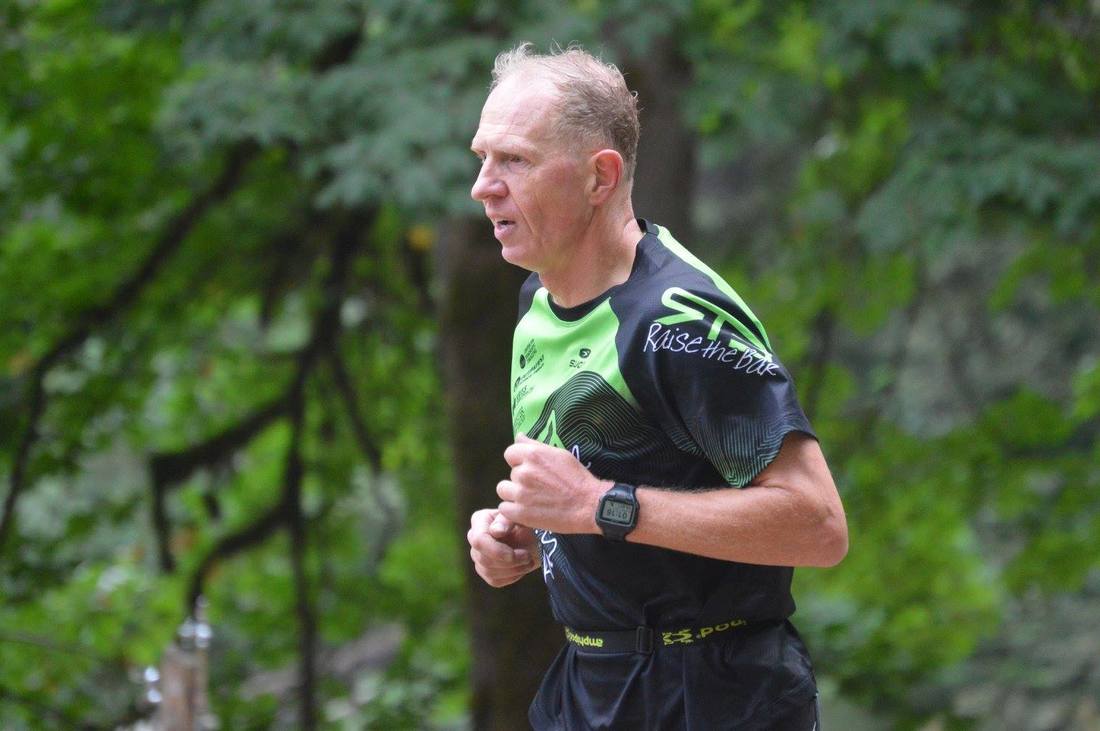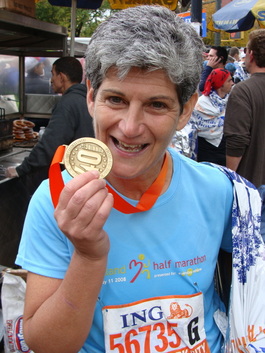 New York Marathon Finisher! New York Marathon Finisher! Because John Bahlenhorst said I should! If you know John his infectious smile and positive energy will lure you in, so I asked tell me more! This conversation took place in 2009, right after I had come back from running in the NYC Marathon. I had been exclusively a recreation runner since the jogging craze began in the 70’s and was feeling that the miles where starting to show its wear and tear on my body. So, John’s suggestion was well timed. John told me about RTB, said I should join, and begin right away by signing up for the swimming sessions. So the journey began…. When and how did triathlons or multisport become a part of your life? My first race was the Lake Sammamish Triathlon in 2010. I was nervous about the swim and started to question why I was doing this? The horn blew, no time to second guess, so off I go and I remember that I had a terrible time sighting the buoys and probably swam twice as far as I needed to! Again I ask myself, why tri? Well, I survived my first race, I found that I loved the bike, especially when I would come up behind and pass a fellow age grouper, and the run was short! The swim however would definitely benefit from more lessons!. All said, I felt this would be a great sport to support my ongoing fitness goals for the long haul. I was hooked!  Jen and Cindy McGonigal Jen and Cindy McGonigal What is the most challenging thing for you to do in triathlon? How do you manage it? The swim. In 2012 in the Chelanman Olympic race, early in the swim I began having problems with my breathing. Long story short, it was S.I.P.E. (Swimming Induced Pulmonary Edema). Symptoms include marked respiratory distress, wet-sounding popping or crackling in the lungs when breathing, a “junky” rattling cough, and the hallmark; coughing up pink, frothy blood-tinged spit. (yes, a little alarming!) Thanks to Jen Edwards for telling me about a study being conducted at Duke University on Immersion Pulmonary Edema (also know as SIPE), I contacted Dr. Moon who was leading the research and told him my story. Although the medical community has not found what specifically contributes to causing SIPE, the research is finding that for some individuals choosing a wet suit that is less restrictive in the chest, jogging prior to the start of the swim to get the blood circulating, warming up in the water to acclimate you body temperature and circulation, and to stay calm may help control the condition from occurring. After having SIPE in 3 races; 2012 & 2013 Chelanman, and 2014 Lake Stevens Half Iron, and now following Dr. Moons suggestions, it seems that I have this condition under control. Three wetsuits later, I finally have a one that is just right in flexibility, and I am religious on my prerace warm up. But at every race, once I’m out of the water running to T1, I breathe a sigh of relief and tell myself that “now’ I can race! 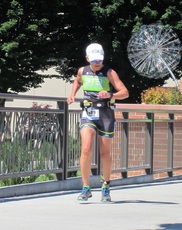 Jen at CDA 70.3 Jen at CDA 70.3 What was the best advice you were ever given? 1) Join RTB! 2) When it comes to training, it shouldn’t be all about how many miles you logged, but rather that the training is specific and quality effort” For me, especially before I retired, having enough time to train was always a challenge. This advice gave me permission to not judge myself by what I wasn’t able to do compared to other teammates, but instead to focus on what “I” could commit to and make the time count! 3) (And to add to #2 above) to take Mike Swienty’s spin classes! Mikes threshold and 90 minute hill climb classes significantly improved my performance on the bike and the run. Thank goodness Mike is back! 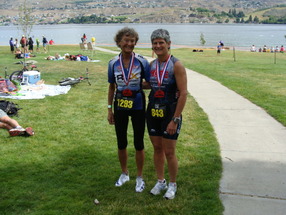 Sister Madonna with Jen at Chelan Sister Madonna with Jen at Chelan Where do you draw your inspiration from? From my teammates! I would like to do a shout out of thanks to my Monday night swim mates (you all know who you are) and my Saturday cycle buddies Cindy, Barb and Michelle! Thank you all for your support, encouragement, laughs and friendship! I have been and continue to be inspired by everyone I’ve met on RTB.
0 Comments
Your comment will be posted after it is approved.
Leave a Reply. |
Raise the BarRace reports, upcoming events, news, and more, from RTB. Archives
September 2023
|
 RSS Feed
RSS Feed
